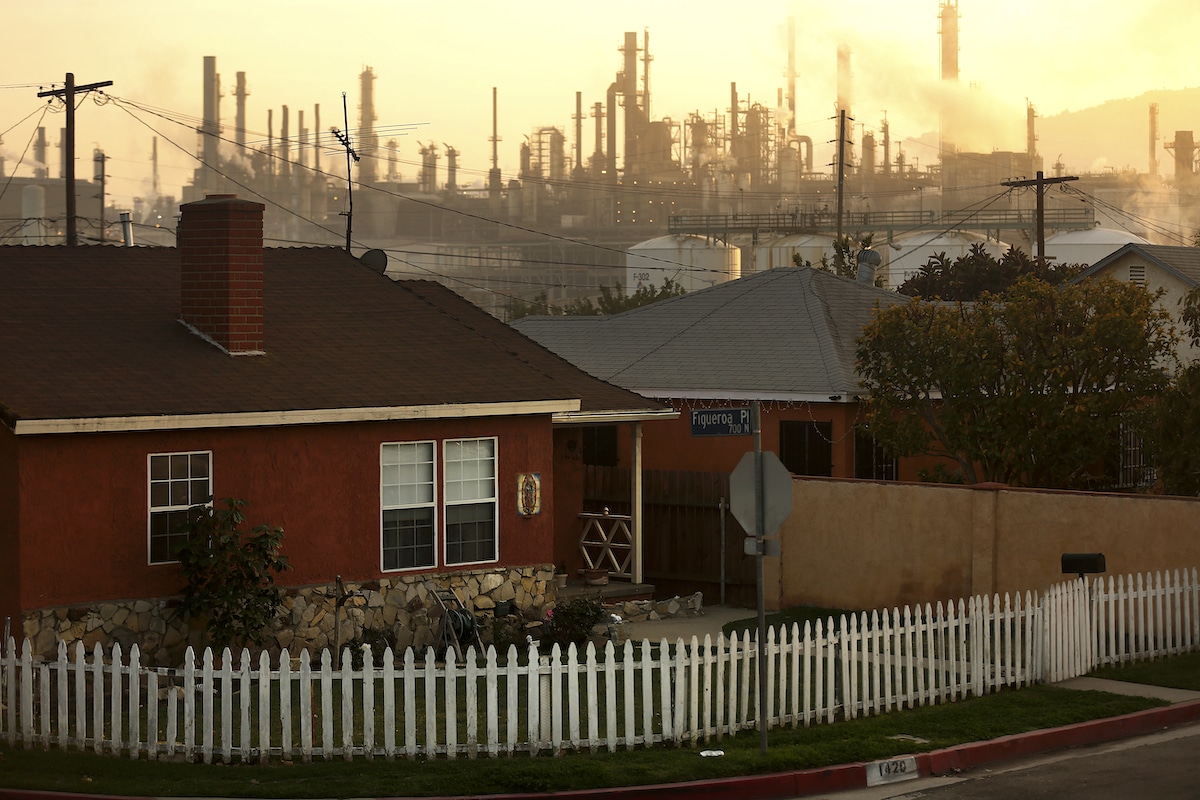
U.S. Oil Refineries Expose Communities to Cancer-Causing Benzene, Report Finds

Last year, a dozen oil refineries in the U.S. exceeded the federal maximum level for average emissions of the highly toxic carcinogen benzene, according to a new report by the Environmental Integrity Project (EIP). Five of the refineries were in Texas, four in Louisiana, one in Indiana, one in Pennsylvania and one in the U.S. Virgin Islands, reported The Guardian.
About 6.1 million people in the U.S. live within three miles of an oil refinery, according to the U.S. Environmental Protection Agency (EPA). The EIP report stated that 129 oil refineries were operating in the U.S. last year, 118 of which reported benzene concentrations at or near the refinery site — an area known as the fenceline — to the EPA. Fenceline communities have minority and low-income populations that are almost twice that of the general population, according to the EPA. Difficult to detect leaks from pumps, valves and other sources are responsible for a considerable amount of the excess benzene emissions, The Guardian reported.
If the average yearly level of the highest measured concentrations of benzene at a refinery is over three micrograms per cubic meter — which includes almost half of the oil refineries — the EIP defines that as a “long-term potential health threat,” the report said. Action is required by the EPA if the average is over nine micrograms per cubic meter, which is considered “action level” benzene emission, reported The Guardian.
“If [facilities] can’t get their benzene below the action level, year after year, we really need to see enforcement from the EPA,” said executive director of the Environmental Integrity Project Eric Schaeffer, as The Guardian reported. “You need to start paying penalties when your fence-line levels persist.”
High-level benzene exposure over periods of shorter duration can have negative health effects like dizziness and headaches, as well as respiratory tract and skin irritation, according to the report. Exposure to concentrations of benzene over 29 micrograms per cubic meter over a period of one to 14 days has the potential to increase risks like the weakening of the immune system and other noncancer effects, estimated the U.S. Agency for Toxic Substances Disease Registry (ATSDR). A two-week average benzene concentration of more than 29 micrograms per cubic meter was recorded at least once by fenceline monitors at 22 facilities last year.
Benzene can increase leukemia risk, the report said, and breathing the carcinogen at levels of 0.13 micrograms per cubic meter over a person’s lifetime has the potential to cause as much as one additional case of cancer for every million people exposed, according to EPA estimates. The health risks increase proportionately with the levels of benzene exposure.
Self-reported data showed that last year the highest average net benzene levels were produced by a refinery owned by Marathon Petroleum in Texas City, Texas, reported The Guardian. People of color make up 62 percent of the approximately 37,000 people who live within three miles of the refinery, and 47 percent of the population is low-income.
“People living near these facilities have greater [exposure] to lifetime cancer risk than any other part of the state, yet the regulatory agencies responsible for protecting us continue to approve permits for these facilities,” said Leticia Gutierrez, Government Relations Director of advocacy group Air Alliance Houston, as The Guardian reported.
Spokesperson for the EIP Tom Pelton said that the EPA’s benzene regulations were the result of a lawsuit brought by the EIP, reported Reuters.
“We want the EPA to enforce their own rules,” said Pelton, as Reuters reported.

 233k
233k  41k
41k  Subscribe
Subscribe 